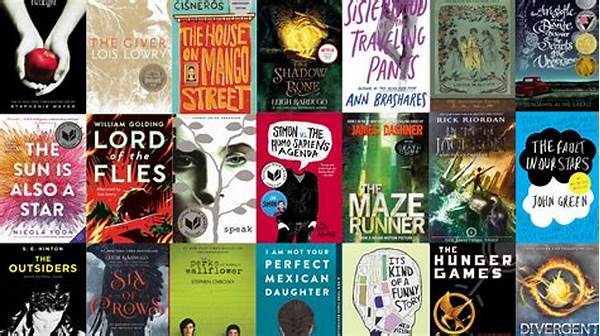Once upon a time, in a realm not so different from our own, a wise old author sat beside a crackling fireplace. This seasoned storyteller knew the secret to captivating worlds and unforgettable tales: dynamic characters. Characters that didn’t just stay within the ink and paper but danced in the minds of readers, evolving with every turning page. The art of creating such characters wasn’t a mere stroke of luck; it was an art form, a symphony of techniques for writing dynamic characters.
Read Now : “essential Nobel Laureate Books List”
Breathing Life Into Fiction
In the heart of every great story lies its characters. Imagine them as seeds, who with proper nurturing, grow into towering trees that sway and bend with the winds of plot and conflict. The techniques for writing dynamic characters are the nutrients for these seeds, bestowing them with authentic personalities, desires, and transformations as their narratives unfold. Much like the blacksmith forging a perfect blade, an author molds characters using these techniques, ensuring they’re equipped for the journey ahead and are compelling enough to capture the reader’s heart.
To start, understanding the character’s background and motivations is crucial. Consider it peering into the soul of your character. What past events shaped them? What do they yearn for? This knowledge acts as the cornerstone of their evolution. Providing them with challenges that push them to their limits encourages growth and transformation. The interplay between their internal and external conflicts creates a vivid tapestry that the audience can lose themselves in, rooting for the characters as they evolve with every twist and turn.
Emulating real-life complexities, dynamic characters experience shifts in perspective over time. These changes aren’t abrupt; they’re subtle, birthed from the trials they endure. And as they shift, so too do the readers’ connections to them. Through the techniques for writing dynamic characters, an author skillfully orchestrates this dance, crafting protagonists and antagonists so rich and intricate that readers see fragments of themselves reflected within the narrative, urging them to reflect on their own journeys and transformations.
Embark on the Journey: Essential Techniques
1. Establish Deep Backgrounds
Like a treasure map, a well-crafted backstory guides the character’s journey. The techniques for writing dynamic characters dwell in the richness of their past, crafting a foundation for their present choices.
2. Craft Intriguing Flaws
Perfection is a myth, and the heart of dynamic characters beats with their flaws. This technique embraces imperfections, making characters relatable and their growth impactful.
3. Develop Meaningful Relationships
No hero stands alone. As characters interact, their dynamics shift, transforming through alliances and rivalries. This technique shapes the character’s arc with each connection made or broken.
4. Introduce Personal Conflicts
Internal strife is the furnace forging dynamic characters. Through personal conflicts, characters confront demons within, leading to compelling transformations—key techniques for writing dynamic characters.
5. Evolve Through Challenges
Read Now : Famous Nobel Prize-winning Authors
Challenges are the drums that drive the story forward. They compel characters to adapt and change, evolving through adversity—a hallmark of crafted dynamic storytelling.
Unveiling Complexities in Characters
In the mosaic of storytelling, dynamic characters are multifaceted gems. Each facet reflects a different hue of their personality, catching the light of various situations as they arise. The techniques for writing dynamic characters involve peeling back layers, revealing depths that aren’t apparent at first glance.
When tales introduce characters, they often bring with them a glimpse of their potential—a spark of who they could become. Suspended at a crossroads, these characters choose paths that lead to transformative arcs, culminating in growth or dissolution based on their choices. As authors employ these techniques, they grant characters room to explore their own complexities and embrace change as a natural part of their journey. The interplay of growth and conflict invites readers to lean in closer, cheering for characters as they wrestle with their evolving identities, ensnaring readers in their journey toward self-discovery.
The Heart of Transformation
Every author, perched above their workspace, carries the power of transformation within their pen. The techniques for writing dynamic characters are an alchemical process, turning base descriptions into vibrant individuals. Through consistent evolution—a gradual molding influenced by the crucible of narrative tension—characters are brought to life.
Yet, the magic lies not in grand gestures but in the subtle shifts. The flicker of doubt in a once-confident protagonist, the rare moment of kindness from an antagonist—these are the notes that resonate with audiences. Each nuanced change signifies progress or regression, weaving a symphony of transformation that is both unpredictable and inevitable. This is the heart of dynamic storytelling, where characters, rather than just plots, take center stage, captivating the audience through their journeys.
Crafting Relatability in Progression
There’s a secret path tread by master storytellers—a hidden trail that allows a reader to journey alongside the character’s transformation. Techniques for writing dynamic characters reveal this path, guiding the reader to see through the character’s eyes. As these characters falter and triumph, they echo the reader’s own experiences, cementing a bond that transcends fiction.
As readers witness a character overcoming a deep-seated fear or finding redemption, an empathetic connection forms. It’s this bond that anchors them to the story, making every chapter a shared experience. Through the expert application of storytelling techniques, these fictional entities bridge the chasm between reality and imagination, inviting readers to walk beside them every step of the way, breathing life into ink and paper.
Techniques for Writing Dynamic Characters: A Journey Not a Destination
At the heart of every unforgettable tale lies not just those who traverse time and space but those who transform along the way. Embarking on the journey, one must embrace the techniques for writing dynamic characters—a journey that doesn’t promise a destination but a continuous evolution.
In the artful dance of storytelling, dynamic characters serve as the choreographers’ expressions, their arcs a performance of growth and change. As they face trials and engagements, their evolution is not merely a narrative device but is emblematic of life’s inherent unpredictability and beauty. Expansive worlds may captivate the mind, but it is the dynamic heart of its characters that captures and holds the soul, beckoning readers time and again to partake in the dance of transformation.









